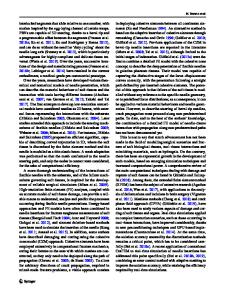A Finite Element Adaptive Plate Model
A simple quadrilateral shell finite element has been formulated for the analysis of adaptive laminated composite plates. The finite element is quadrilateral in shape and has 4 nodal points with 24 degrees of freedom.
- PDF / 29,938,830 Bytes
- 359 Pages / 481.89 x 691.654 pts Page_size
- 86 Downloads / 358 Views
Series Editors: The Rectors Sandor Kaliszky - Budapest Mahir Sayir - Zurich Wilhelm Schneider - Wien The Secretary General Bernhard Schrefler - Padua Former Secretary General Giovanni Bianchi - Milan Executive Editor Carlo Tasso - Udine
The series presents lecture notes, monographs, edited works and proceedings in the field of Mechanics, Engineering, Computer Science and Applied Mathematics. Purpose of the series is to make known in the international scientific and technical community results obtained in some of the activities organized by CISM, the International Centre for Mechanical Sciences.
INTERNATIONAL CENTRE FOR MECHANICAL SCIENCES COURSESAND LECTURES - No. 429
SMART STRUCTURES APPLICATIONS AND RELATED TECHNOLOGIES
EDITEDBY AFZAL SULEMAN INSTITUTO SUPERIOR TECNICO
~ Springer-Verlag Wien GmbH
This volume contains 230 illustrations
This work is subject to copyright. All rights are reserved, whether the whole or part of the material is concerned specifically those of translation, reprinting, re-use of illustrations, broadcasting, reproduction by photocopying machine or similar means, and storage in data banks.
© 2001 by Springer-Verlag Wien Originally published by Springer-Verlag Wien New York in 2001 SPIN 10855601
In order to make this volume availab1e as economically and as rapidly as possible the authors' typescripts have been reproduced in their original forms. This method unfortunately has its typographical limitations but it is hoped that they in no way distract the reader.
ISBN 978-3-211-83681-1 DOI 10.1007/978-3-7091-2686-8
ISBN 978-3-7091-2686-8 (eBook)
PREFACE
In the past decade, technological developments in material and computer seiences have evolved to the point where their synergistic combination have culminated in a new field of multi-diseiplinary research in smart structures, systems and related technologies. The advances in material seiences have provided a comprehensive and theoretical framework for implementing multifunctionality into materials, and the development of high speed digital computers has permitted the Iransformation of that framework into methodologies for practical design imd production. The concept is elementary: a highly integrated sensor system provides data on the structure and its environment to a processing and control system which in turn signals integrated actuators to modify the system properlies in an appropriate fashion. The multifunctional electro-magneto-thermo -mechanorheological materials have presented an exceptional promise in the fields of active vibration suppression, shape control, noise attenuation, structural health monitoring, smart machines and micro-electro-mechanical systems with application in aircraft, aerospace, automobile, eivil structures and consumer industry. This book is a result of the Advanced School on Smart Structures and Materials: Theory and Applications, which took place in the Centre International des Seiences Mecaniques (CISM), Udine, Italy, during June 19-23, 2000. The course, lectured by the authors of the different pa











